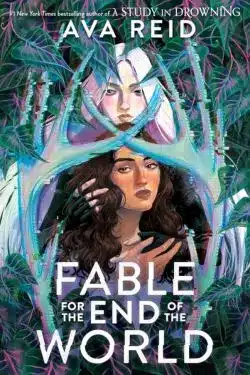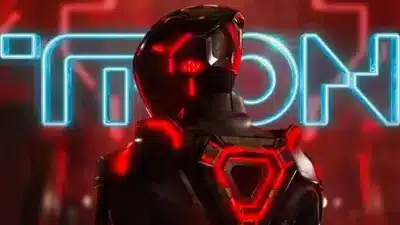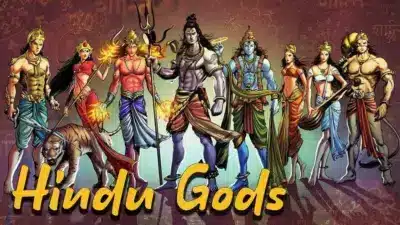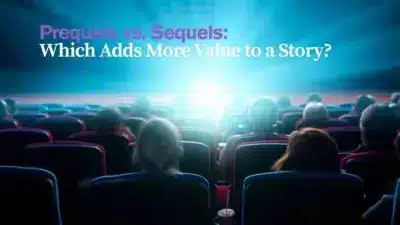Ava Reid’s “Fable for the End of the World,” released on March 4, 2025, presents a gripping dystopian narrative. Set in a world dominated by the omnipresent Caerus corporation, the novel follows the harrowing journey of Inesa Yael Soulis and her younger brother, Luka, as they navigate a society where debtors are subjected to a brutal, live-streamed event known as the Lamb’s Gauntlet. This high-stakes competition pits “Lambs” against genetically modified “Angels” in a deadly hunt, serving as both entertainment and a grim method of debt repayment.
A Dystopian World Under Corporate Control
In this bleak setting, Caerus exerts totalitarian control over society, exploiting desperate citizens and enforcing its dominance through the Lamb’s Gauntlet. The Gauntlet is a televised spectacle where debtors, referred to as “Lambs,” are hunted by “Angels,” lab-modified humans engineered to be killing machines. This brutal event not only serves as a form of entertainment but also as a stark reminder of the corporation’s power and the dire consequences of indebtedness.

Complex Characters and Emotional Depth
Reid masterfully crafts her characters, imbuing them with depth and complexity. Inesa, the protagonist, is portrayed as a resilient and resourceful young woman, driven by a fierce determination to protect her brother and survive against overwhelming odds. Her relationship with Luka is a poignant depiction of sibling loyalty and love, providing a glimmer of hope in an otherwise grim reality. Conversely, her relationship with her mother is fraught with tension and neglect, highlighting the emotional scars inflicted by a harsh and unforgiving society.
Melinoë, the Angel assigned to hunt Inesa, is equally compelling. Despite being engineered to be a remorseless killer, she experiences “glitches”—painful memories that seep through her conditioning, hinting at a buried humanity. This internal conflict adds layers to her character, making her more than just a formidable antagonist. As Inesa and Melinoë’s paths converge, their interactions blur the lines between hunter and hunted, enemy and ally, leading to a nuanced exploration of identity and agency.
Themes of Societal Critique and Human Resilience
“Fable for the End of the World” serves as a scathing critique of capitalist exploitation and societal apathy. Reid exposes the dehumanizing effects of a system that commodifies individuals and perpetuates inequality. The Lamb’s Gauntlet epitomizes the extreme consequences of such a system, turning human suffering into a form of mass entertainment. This narrative resonates with contemporary issues, prompting readers to reflect on the ethical implications of societal structures and the potential trajectory of unchecked corporate power.
Amidst this bleak landscape, the novel also celebrates human resilience and the capacity for empathy. Inesa’s unwavering determination to protect her brother and her ability to find compassion even for her would-be executioner underscore the enduring strength of familial bonds and the human spirit. Melinoë’s struggle against her imposed nature highlights the innate desire for autonomy and the possibility of redemption.
A Sapphic Romance Amidst Chaos
The evolving relationship between Inesa and Melinoë adds a poignant layer to the narrative. Their initial dynamic, rooted in survival and opposition, gradually transforms into a complex bond that challenges their perceptions of loyalty and love. This sapphic romance is portrayed with sensitivity and depth, offering a refreshing take on the enemies-to-lovers trope within a dystopian context. However, some readers have noted that the development of their relationship felt somewhat rushed, leaving a desire for a more gradual and nuanced exploration.
Critical Reception and Reader Responses
The novel has garnered acclaim for its intricate world-building and thought-provoking themes. Kirkus Reviews describes it as “a thrilling, page-turning must-read: prescient and necessary, impressive and disturbing.” Readers have praised Reid’s ability to weave social commentary seamlessly into the narrative, with one noting the “epic social commentary presented in that signature Ava Reid style, subtle yet clear to all that pay attention.” However, some critiques have emerged regarding the pacing and depth of certain plot elements. A reviewer expressed a desire for more extensive exploration of the Caerus corporation and the societal structures, stating, “I constantly found myself waiting to find out more about the Caerus corporation and the many ways it’s corrupted or the way the class system in that world actually works.”
Conclusion
“Fable for the End of the World” stands as a compelling addition to the dystopian genre, offering a narrative rich with emotional depth, societal critique, and complex character dynamics. Ava Reid’s exploration of a world teetering on the edge of collapse serves as both a cautionary tale and a testament to the enduring power of love and resilience. While certain aspects may leave readers yearning for more, the novel’s impact is undeniable, solidifying its place as a noteworthy read in contemporary literature.
Also Read: Heartwood: By Amity Gaige (Book Review)



